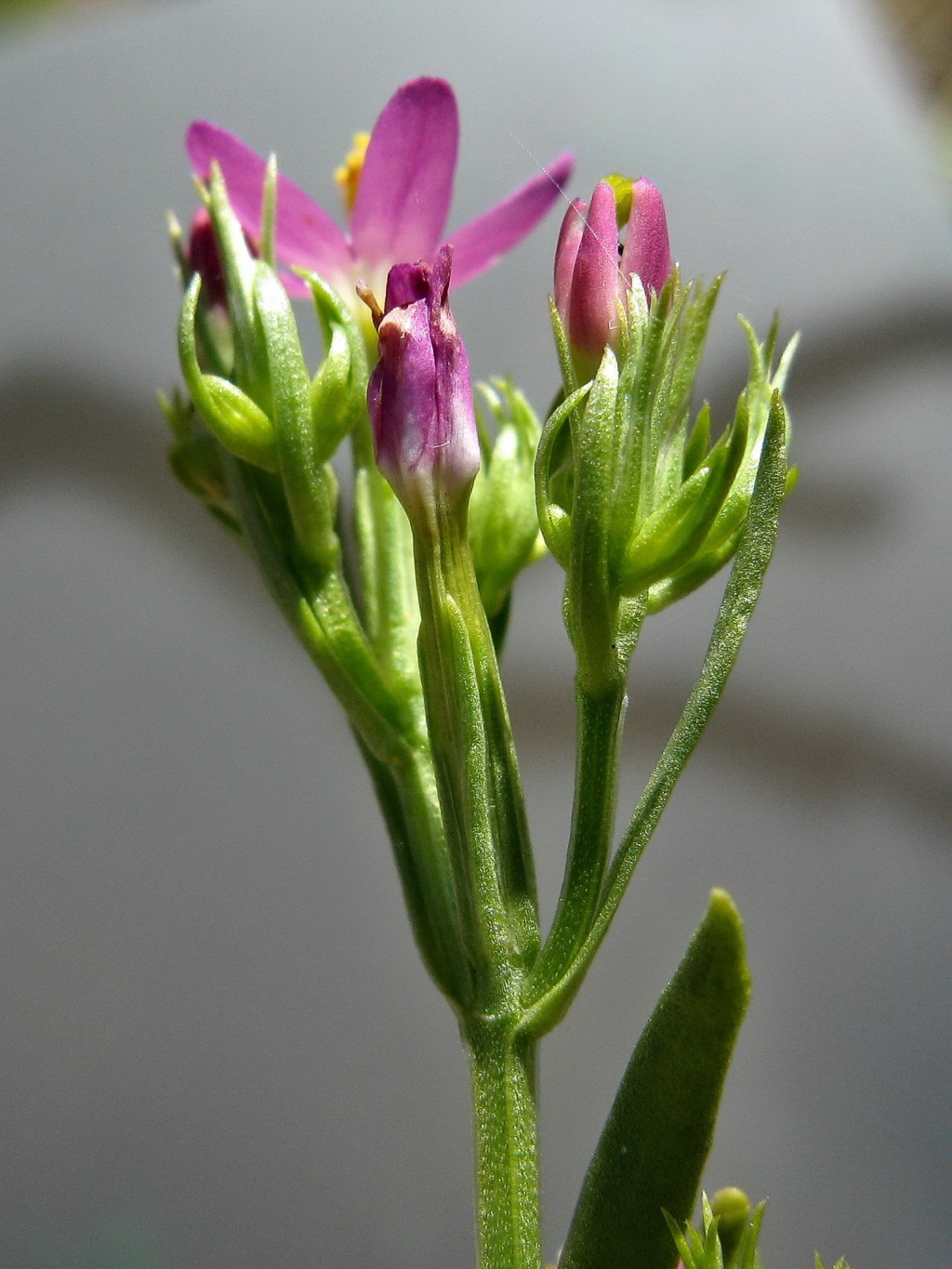Centaurium tenuiflorum
(Hoffmanns. & Link) Fritsch Slender CentauryErect annual, mostly 15–40 cm high. Main stem(s) with 5–9 internodes below lowermost branch. Basal leaves not or hardly rosetted, usually withered at flowering. Stem leaves ovate to elliptic, to 25 mm long, 10 mm wide, smaller toward base, obtuse to subacute. Inflorescence typically a rather dense, corymbose dichasium with branches spreading from main axis at c. 15°–25°. Flowers sessile or with pedicels to c. 2 mm long; calyx-lobes 4–6 mm long; corolla magenta, tube 7–9 mm long, lobes 3–4.5 mm long; anthers mostly 1–1.2 mm long; ovary 6–8 mm long. Capsule c. 8–9 mm long; seeds 0.25–0.35 mm diam., reticulate, pale to reddish-brown. Flowers Nov.–Mar. (–May).
LoM, MuM, Wim, GleP, Brid, VVP, VRiv, RobP, MuF, GipP, OtP, WaP, Gold, CVU, GGr, DunT, NIS, EGL, EGU, WPro, HSF, HNF, OtR, Strz, MonT, HFE, VAlp. Naturalized all States except NT. Native to western Europe and Mediterranean countries. Except for areas of extreme high or low rainfall, widespread and common almost throughout the State; often co-extensive with (and sometimes apparently hybridizing with) C. erythraea, but usually occurring in effectively drier sites.
Native to western Europe and Mediterranean countries.
Walsh, N.G. (1999). Gentianaceae. In: Walsh, N.G.; Entwisle, T.J., Flora of Victoria Vol. 4, Cornaceae to Asteraceae, pp. 310–321. Inkata Press, Melbourne.
 Spinning
Spinning




